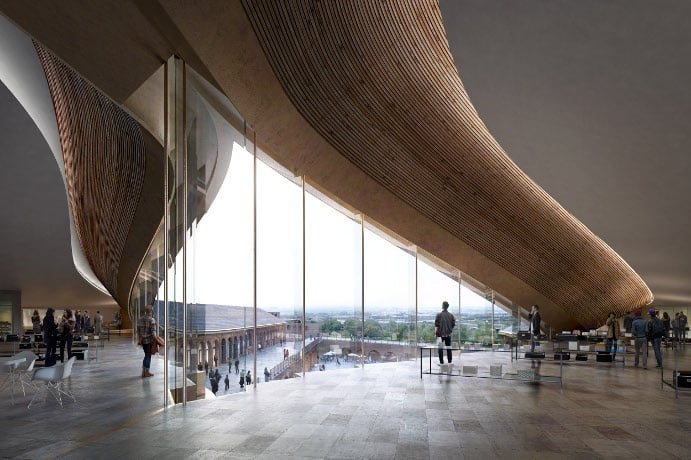More and more people are taking advantage of the positive ecological and physical properties of timber constructions. In addition to their many advantages when compared with solid buildings, constructing with wood, however, has one disadvantage which many people are unwilling to accept: poor sound insulation. Low frequencies below 200 Hz, in particular, cannot be masked in lightweight constructions. As part of the Swiss National Research Program "Resource Wood", researchers have succeeded in changing this through an optimized ceiling construction. This could be soon be competing with solid ceiling constructions in multi-story residential and office buildings.

© fotolia / adriano_cz
Low-pitched sounds are particularly penetrating, in the truest sense of the word. Anyone who has been the 'victim' of a nearby music event or neighbor with powerful woofers can confirm this. The bass goes right through you. The muffled sounds generated by neighbors’ pets or household appliances, such as washing machines, are similarly disturbing simply because of their motion. The structural problem is that low frequencies iare poorly absorbed and, in the worst case, are conducted through components such as ceilings and walls. Multi-story lightweight constructions , i.e., typical wooden buildings using a beam framework, are particularly vulnerable.
Equivalent with solid buildings
In order to be able to still build lightweight multi-story timber constructions - i.e., not as a solid wood building - without having to abandon good footfall sound insulation a research group led by lubos krajči and Carl Hopkins has come up with a constructive solution in recent years. The aim of this wor, which is part of the National Research Program “Resource Wood” (NRP 66), was to develop a ceiling construction which provides improved sound insulation properties in low frequencies below 200 Hz which is not thicker than solid ceiling constructions.
Until now, in multi-story timber constructions special ceiling structures with larger ceiling heights and tricky structures were necessary in order to achieve the sound insulation properties found in concrete construction. By means of experiments and subsequent validation by a finite element model for a reproduction of the dynamics, the researchers succeeded in developing a dowelled laminated wooden board construction made of beech wood which makes over-dimensioned solutions irrelevant. In combination with a floating screed, this design has similar noise properties in the low frequency range as solid ceiling constructions.
For a "wooden" future?
The ceiling construction developed under the name "competitive wooden floor system" is particularly significant, since it removes one of the last obstacles to the multi-story timber construction. As an environmentally friendly solution for high density or urban areas, wooden constructions are soaring to ever greater heights. With the HoHo in Vienna and Mjøstårnet in Brumunddal, Norway, two timber high-rise buildings are being built which will be over 80 meters high. In addition to fire protection, sound insulation presents one of the biggest challenges in such projects. The new ceiling system could contribute an important part to the success of such high-rise building solutions and so help to initiate a new era of wooden urban planning.





